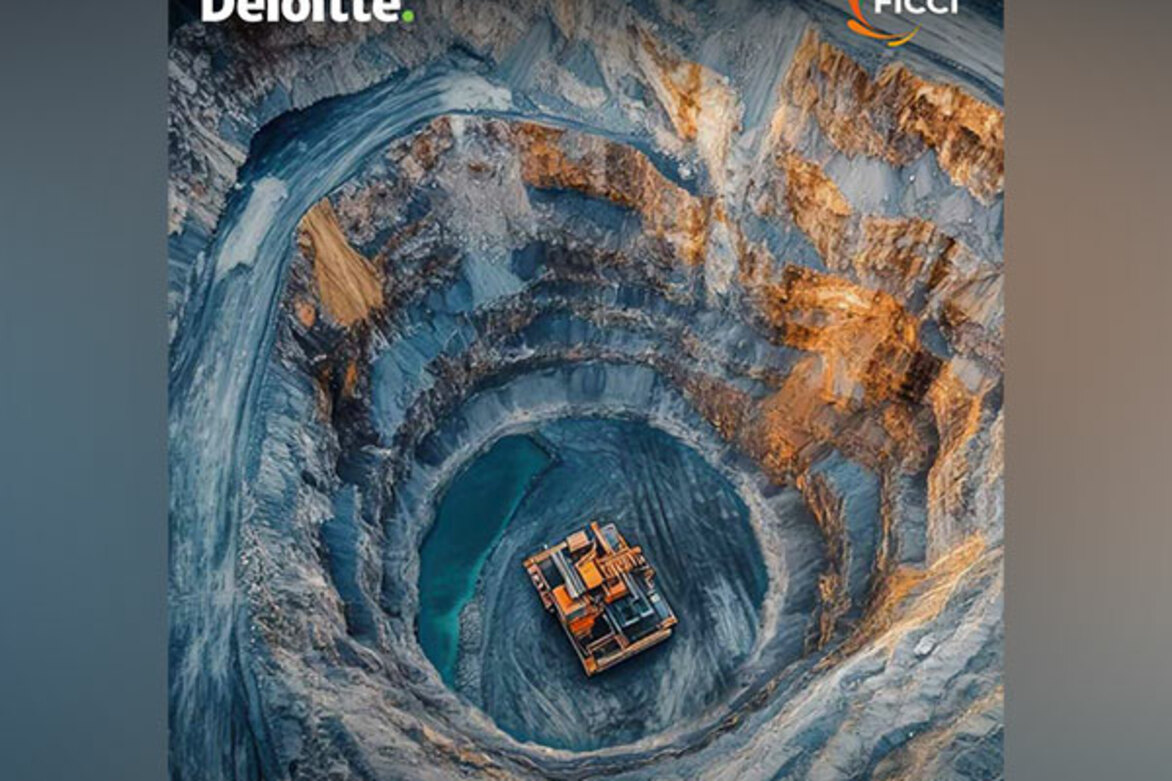India intensifies critical minerals push, aims to auction maximum blocks by 2031
ANI
21 Feb 2025

New Delhi [India], February 21 (ANI): India plans to maximise the auction of critical mineral blocks by 2031, advancing its strategic push to secure domestic supply chains for minerals essential to the country's green energy and technology sectors.
Speaking at a FICCI conference, 'Critical Minerals Matrix', Union Minister of State for Mines and Coal, Satish Chandra Dubey, outlined the government's strategic approach to reducing import dependency for critical minerals.
The announcement follows the recent launch of the National Critical Minerals Mission, which has allocated Rs 34,300 crore over seven years to strengthen India's position in the critical minerals sector.
'The government has already auctioned 24 critical mineral blocks domestically, and we aim to auction as many critical mineral blocks as possible by 2031,' the minister said.
The initiative forms part of a broader strategy to enhance India's mineral security and reduce vulnerability to international supply chain disruptions.
The minister emphasised the role of public-private partnerships in achieving these objectives.
'We must work as complementary partners and as a team to build a self-reliant India,' Minister Dubey stated, urging increased private sector involvement in mineral exploration and extraction activities.
The announcement comes amid growing concerns about critical mineral supply chains, particularly for materials essential to electric vehicles, electronics manufacturing, and renewable energy systems.
Critical minerals are those minerals that are essential for economic development and national security.
In June 2023, India has identified at least 30 critical minerals taking into account its requirements for sectors like defence, agriculture, energy, pharmaceutical, and telecom and in line with its Atmanirbar (self-reliance) roadmap.
Those critical minerals were Antimony, Beryllium, Bismuth, Cobalt, Copper, Gallium, Germanium, Graphite, Hafnium, Indium, Lithium, Molybdenum, Niobium, Nickel, PGE, Phosphorous, Potash, REE, Rhenium, Silicon, Strontium, Tantalum, Tellurium, Tin, Titanium, Tungsten, Vanadium, Zirconium, Selenium, and Cadmium. They are expected to serve as a guiding framework for policy formulation, strategic planning and investment decisions in the mining sector.
At the conference today, Jyoti Vij, Director General, FICCI, highlighted the economic significance of critical minerals.
She emphasised that the launch of the National Critical Minerals Mission was timely, coinciding with increased budget emphasis on critical minerals, and would help boost production, recycling, and global acquisition of critical mineral assets to reduce dependence on imports and secure stable supply chains.
Vij announced the constitution of the FICCI Committee on Critical Minerals, which will work closely with the government and the industry stakeholders to address sector issues and leverage opportunities.
On occasion, Dhiraj Nayyar, Group Chief Economist, Vedanta, highlighted the urgency of developing domestic resources, noting that electric vehicles require six times more minerals than conventional cars, whilst offshore wind infrastructure demands nine times more minerals than traditional power plants.
'We don't want to move from import dependence on oil to import dependence on critical minerals. The key is exploration,' Nayyar emphasised, calling for streamlined approval processes and increased flexibility in land allocation for exploration activities.
Elaborating on the market opportunity, Pratyush Sinha, Vice President of LOHUM, noted that the government's Rs 34,000 crore Mission represents a methodical policy response to industry demands, developed after extensive consultation.
Citing the example of lithium, where global production is expected to increase tenfold in the next decade from the current 130,000 tonnes, Sinha emphasised that rapid market growth creates opportunities for new entrants to establish significant market positions.
India's critical minerals demand is poised for exponential growth across key sectors, according to a new FICCI-Deloitte report, 'Recovery of Critical Minerals from Mine Tailings and Overburden,' launched by the minister at the conference.
Rajib Maitra, Partner at Deloitte, highlighted that lithium demand alone is expected to increase nine to tenfold over the next decade. The report identifies significant opportunities in recovering critical minerals from mine tailings and overburden.
The report outlines four key strategic areas for development: policies and incentives, extraction processing technologies, supply chain integration, and capacity building.
It recommends establishing Critical Mineral Recovery Zones with public-private partnerships, creating a nationwide assessment database for mine tailings, and developing dedicated regulatory frameworks for mineral extraction. .
Besides, it emphasises the importance of international collaboration and suggested India could learn from successful models implemented in Australia, the United States, Japan, and Canada, where specific funds and collaborative development programmes support critical mineral recovery from tailings.
Separately, in another news, the Ministry of Mines has shifted minerals Barytes, Felspar, Mica and Quartz from the list of minor minerals to the category of major minerals. An official gazette notification was put out dated February 20.
'Once categorised as major minerals, there would be an increase in exploration and scientific mining of these minerals which are an important source of many critical minerals,' said the mines ministry in a statement today. (ANI)
